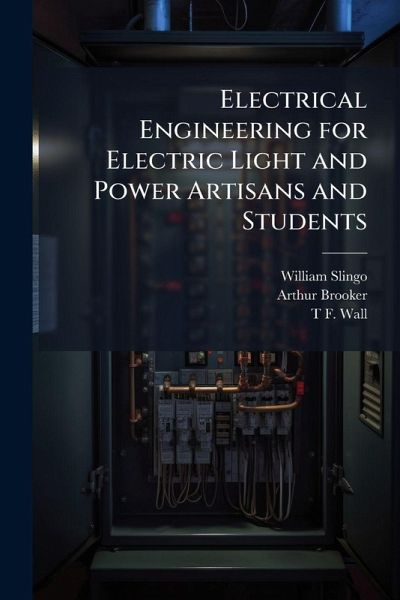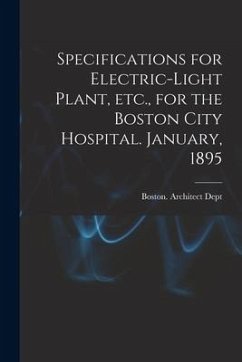
Electrical Engineering for Electric Light and Power Artisans and Students

PAYBACK Punkte
17 °P sammeln!
"Electrical Engineering for Electric Light and Power Artisans and Students" is a comprehensive guide designed for both practicing artisans and students venturing into the field of electrical engineering. Originally published in 1908, this book meticulously covers the syllabus prescribed by the City and Guilds Technical Institute, ensuring a thorough grounding in the essential principles and practices of the time. Authored by William Slingo and Arthur Brooker with contributions by T.F. Wall, this volume provides detailed explanations and practical insights into electric light and power systems....
"Electrical Engineering for Electric Light and Power Artisans and Students" is a comprehensive guide designed for both practicing artisans and students venturing into the field of electrical engineering. Originally published in 1908, this book meticulously covers the syllabus prescribed by the City and Guilds Technical Institute, ensuring a thorough grounding in the essential principles and practices of the time. Authored by William Slingo and Arthur Brooker with contributions by T.F. Wall, this volume provides detailed explanations and practical insights into electric light and power systems. It serves as an invaluable resource for anyone seeking to understand the foundations of electrical engineering as it was taught and practiced in the early 20th century. The book's enduring value lies in its clear exposition of core concepts and its relevance to the historical development of electrical technology. This work has been selected by scholars as being culturally important, and is part of the knowledge base of civilization as we know it. This work was reproduced from the original artifact, and remains as true to the original work as possible. Therefore, you will see the original copyright references, library stamps (as most of these works have been housed in our most important libraries around the world), and other notations in the work. This work is in the public domain in the United States of America, and possibly other nations. Within the United States, you may freely copy and distribute this work, as no entity (individual or corporate) has a copyright on the body of the work. As a reproduction of a historical artifact, this work may contain missing or blurred pages, poor pictures, errant marks, etc. Scholars believe, and we concur, that this work is important enough to be preserved, reproduced, and made generally available to the public. We appreciate your support of the preservation process, and thank you for being an important part of keeping this knowledge alive and relevant.



![Report of St. Louis Public Service Commission to the Municipal Assembly of St. Louis on Rates for Electric Light and Power [microform] Cover Report of St. Louis Public Service Commission to the Municipal Assembly of St. Louis on Rates for Electric Light and Power [microform]](https://bilder.buecher.de/produkte/66/66171/66171063n.jpg)

![Electric-light Supplies [catalogue, 1899] American Electric Company .. Cover Electric-light Supplies [catalogue, 1899] American Electric Company ..](https://bilder.buecher.de/produkte/65/65499/65499293n.jpg)
![Reports of the Municipal Electric Light Plant Committee [microform] Cover Reports of the Municipal Electric Light Plant Committee [microform]](https://bilder.buecher.de/produkte/65/65583/65583326n.jpg)

![Ball Electric Light System for All Purposes of Illumination [microform]: the Ball Electric Light Co. (Limited), of Canada, 57 Adelaide Street West, To Cover Ball Electric Light System for All Purposes of Illumination [microform]: the Ball Electric Light Co. (Limited), of Canada, 57 Adelaide Street West, To](https://bilder.buecher.de/produkte/65/65586/65586645n.jpg)

![Illustrated Catalogue and Price List of the Ball Electric Light Apparatus for All Purposes of Illumination [microform]: Also Price List of Motors and Cover Illustrated Catalogue and Price List of the Ball Electric Light Apparatus for All Purposes of Illumination [microform]: Also Price List of Motors and](https://bilder.buecher.de/produkte/65/65620/65620709n.jpg)
![A Warning From the Edison Electric Light Co [microform] Cover A Warning From the Edison Electric Light Co [microform]](https://bilder.buecher.de/produkte/66/66163/66163844n.jpg)
![The Edison Incandescent Electric Light [microform]: Its Superiority to All Other Illuminants Cover The Edison Incandescent Electric Light [microform]: Its Superiority to All Other Illuminants](https://bilder.buecher.de/produkte/65/65487/65487814n.jpg)